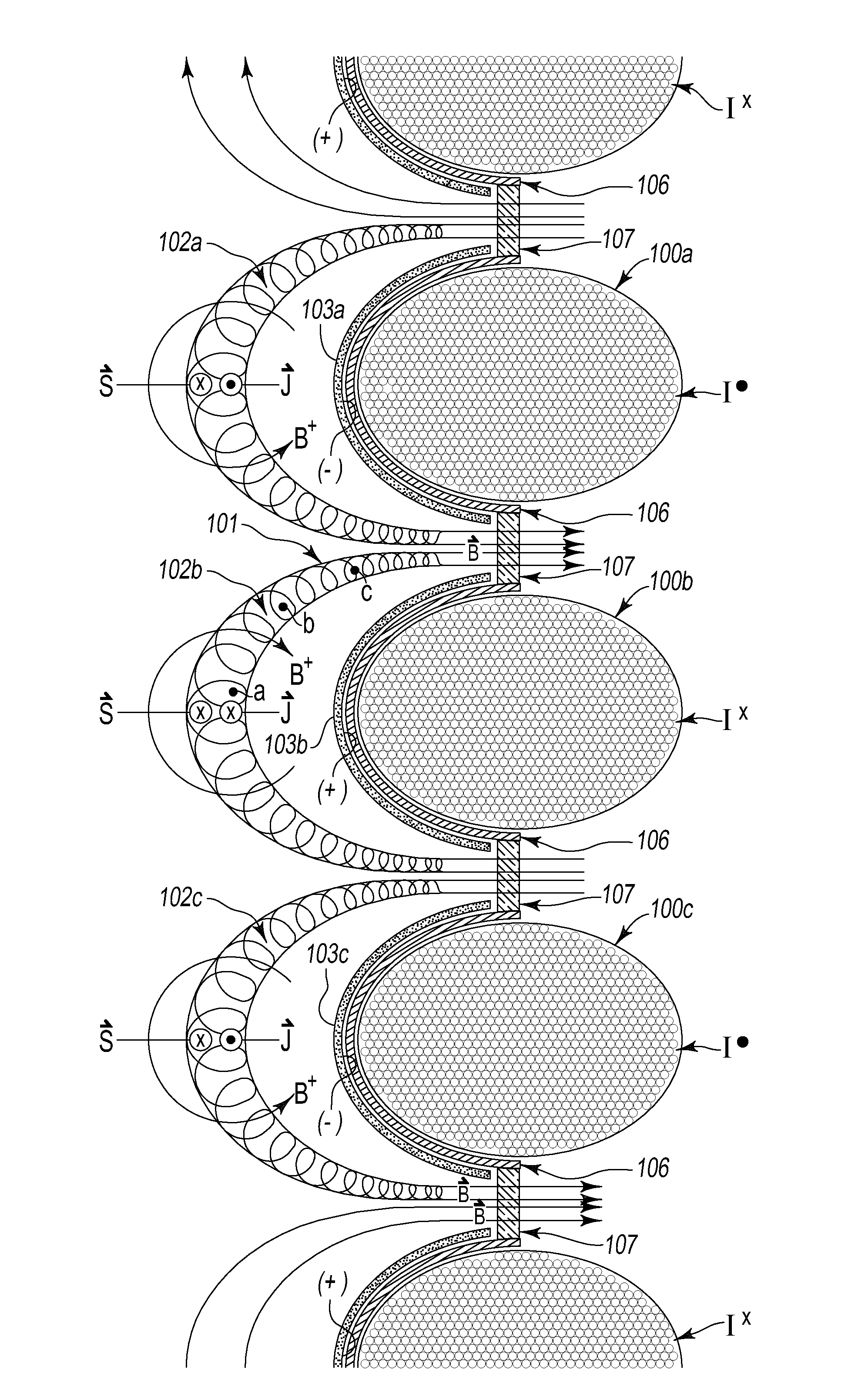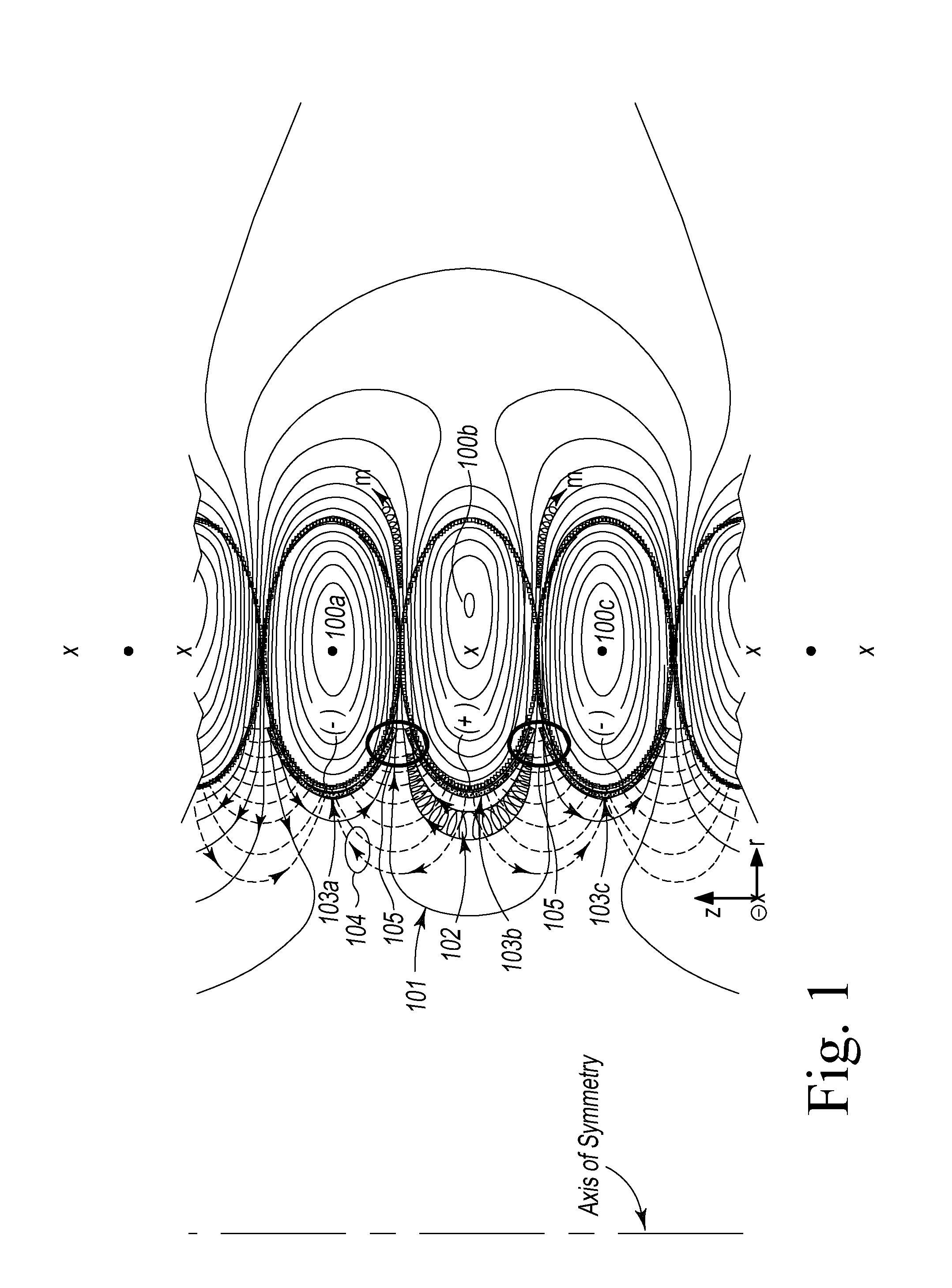Plasma confinement device
a technology of plasma confinement and confinement device, which is applied in the direction of plasma technique, electrical equipment, electric discharge tube, etc., can solve the problem that the cusp reactor invariably allows plasma to occupy the null poin
- Summary
- Abstract
- Description
- Claims
- Application Information
AI Technical Summary
Benefits of technology
Problems solved by technology
Method used
Image
Examples
Embodiment Construction
[0029]Referring now to FIG. 1, to create a cusped-geometry magnetic field for plasma confinement, magnetic confinement field coils 100 (“field coil”& etc.) of equal major radius are placed along a shared cylindrical axis in adequate proximity and energized such that adjacent magnetic fields oppose, exert a repelling Ampère force upon adjacent field coils 100, and generate cusps in the magnetic field in regions of space 105 (“the cusp”& etc.) for plasma 102 charged particle reflection or loss along magnetic field lines 101. In cylindrical coordinates the reactor may be of any length along the z-axis and of any radius and composed of any number of coils 100. In general the number of magnetic field coils 100 and electrodes 103 is N, the number of cusps 105 between magnetic fields therefore created is N−1, the number of confined plasmas 102 is N−2, and preferentially N is an odd number equal to or greater than 5. Plasma 102, illustrated to occupy the confinement region interior to magne...
PUM
 Login to View More
Login to View More Abstract
Description
Claims
Application Information
 Login to View More
Login to View More - R&D
- Intellectual Property
- Life Sciences
- Materials
- Tech Scout
- Unparalleled Data Quality
- Higher Quality Content
- 60% Fewer Hallucinations
Browse by: Latest US Patents, China's latest patents, Technical Efficacy Thesaurus, Application Domain, Technology Topic, Popular Technical Reports.
© 2025 PatSnap. All rights reserved.Legal|Privacy policy|Modern Slavery Act Transparency Statement|Sitemap|About US| Contact US: help@patsnap.com



